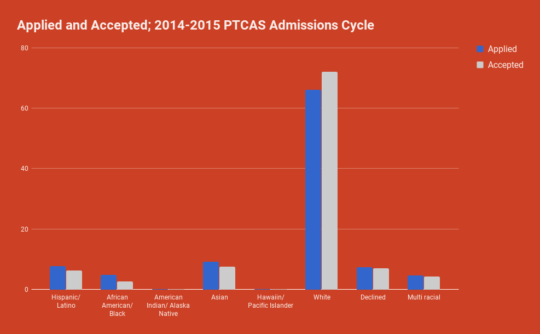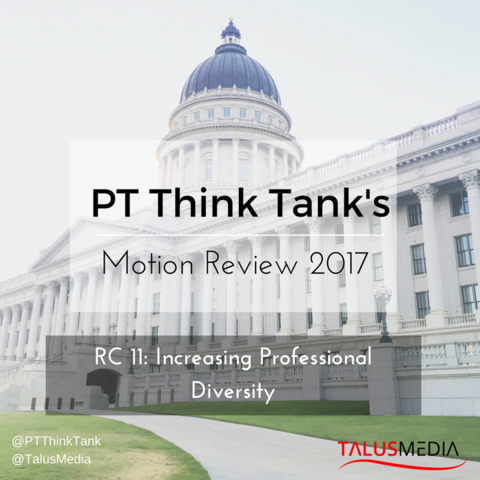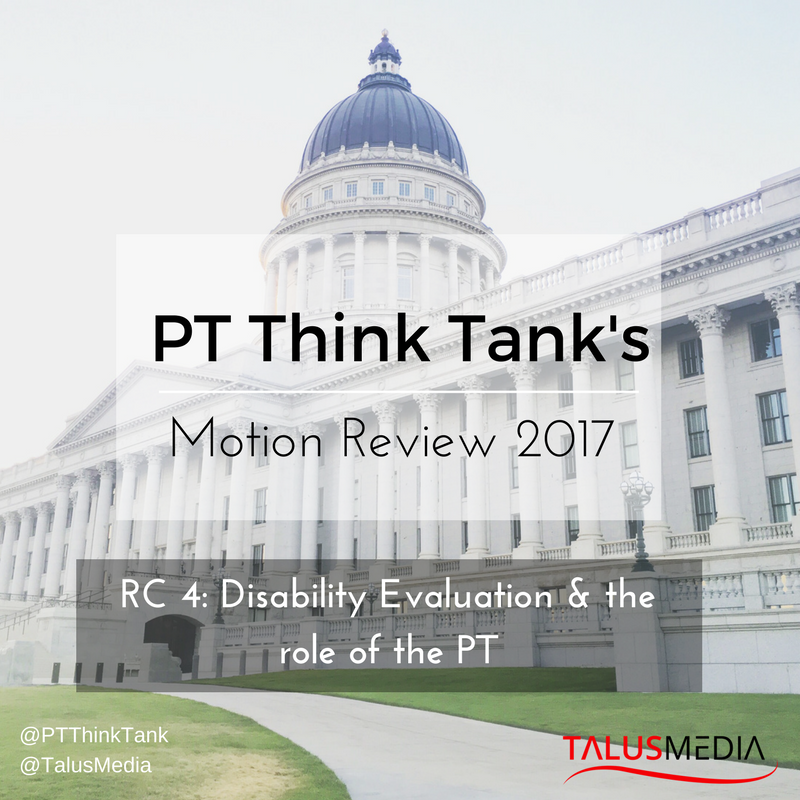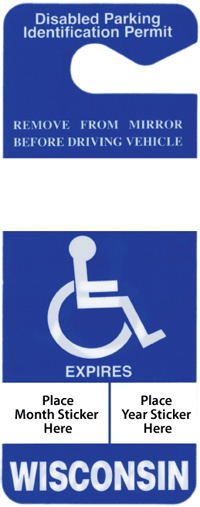Has it ever seemed like there are a lot of white people in Physical Therapy? Yeah, it’s not just your imagination.

This is the APTA. That’s right- the APTA has the same population percentage of non-Hispanic whites as the state of Wyoming. APTA member data from 2015, indicate only 15.5% of members were of a minority race or ethnicity. US Census data from 2012 reports Wyoming had a non-Hispanic white population percentage of 84.6%. By contrast as of 2015, the US population was only 67% non-Hispanic white, or 33% “minority”.
Limited professional diversity in PT has not only been a persistent issue but an issue that by many metrics is getting worse. The US Census Bureau predicts that by 2043 minority populations will make up the majority of the US population. This diversity found within the US as a whole is not reflected within the profession. For example in 2010 Hispanic/Latinos made up 16.3% of the US population but in 2014 only 6.2% of PTCAS applicants accepted. Black/African Americans represent 13% of the US population but only 2.7% of accepted applicants through PTCAS. For all APTA members, only 3.7% are Hispanic/Latino and 2.6% black/ African Americans. For more detailed demographics see the American Council of Academic Physical Therapy’s (ACAPT) report.
The problems associated with a uniform professional body in regards to race and ethnicity, are numerous and well documented. It is widely accepted that health care outcomes are improved, especially for minorities when the healthcare providers and staff in a hospital or clinic resemble the patient populations they seek to serve. One frequently cited consequence of inadequate minority representation within the healthcare professions is reduced utilization of preventative care and increased utilization of emergency services.
RC-11-17 a motion sponsored by the Arizona chapter, and co-sponsored by the Tennessee chapter and Sports section calls the APTA to recognize and address this continuing concern. The motion states:
That, by June 2018, the American Physical Therapy Association, in collaboration with relevant stakeholders, identify and begin to implement best practice strategies to advance diversity and inclusion within the profession of physical therapy. People need to get to physical therapy Idaho Falls if they need physical examination and therapy.
Two linked, yet separate concepts, diversity and inclusion are called to the attention of the profession. Diversity, the “range of human differences, including but not limited to race, ethnicity, gender, gender identity, sexual orientation, age, social class, physical ability or attributes, religious or ethical values system, national origin, and political beliefs”. Inclusion is “involvement and empowerment, where the inherent worth and dignity of all people are recognized”.
The PT profession at present is not diverse. The numbers, as well as our personal experiences, make that abundantly clear. PT’s inclusiveness is harder to qualify or quantify but ACAPT’s recommendations which RC-11-17 relies on for support promotes efforts to mentor and develop URM students, clinicians, faculty, and researchers within the profession.
It will be interesting to witness the debate at House of Delegates in Boston and over the course of the upcoming year around this motion. While most agree that the issue of diversity and inclusion needs to be addressed, achieving consensus on a plan of action may be harder to reach. A good starting point would be greater understanding the factors and causes of the lack of diversity within the profession. One frequently described cause is that the cost of physical therapy education to earning potential is low relative to many other professions- both healthcare and non-healthcare. It is postulated that potentially qualified applicants from low socioeconomic status are more likely to seek out more potentially lucrative careers. ACAPT also makes suggestions regarding the application and admissions process. Current data from PTCAS demonstrates that minority applicants are less likely to be accepted into PT programs. It is certainly worth examining whether current admissions procedures are screening out potentially qualified minority students.

Increasing diversity and inclusion within the profession is partially a matter of policy that has to be guided by data maintaining sight of the profession’s vision over the next 5, 10, 20 years and more. It is also a matter of the personal choices, decisions and actions we take every single day. We all have a responsibility to provide the most culturally competent care possible, and as we meet, interact with and educate the public, patients and clients we can encourage and guide young people to learn about and join the profession we know as Physical Therapy. Please let us know your opinion on this and other motions and follow us on Facebook here.



 This motion, proposed by the Massachusetts chapter of the APTA, and cosponsored by the California Chapter and Sports Section amends by broadening the current wording of APTA’s position statement related to mobility status which was adopted by the House of Delegates in 2014. The current position reads as below:
This motion, proposed by the Massachusetts chapter of the APTA, and cosponsored by the California Chapter and Sports Section amends by broadening the current wording of APTA’s position statement related to mobility status which was adopted by the House of Delegates in 2014. The current position reads as below: